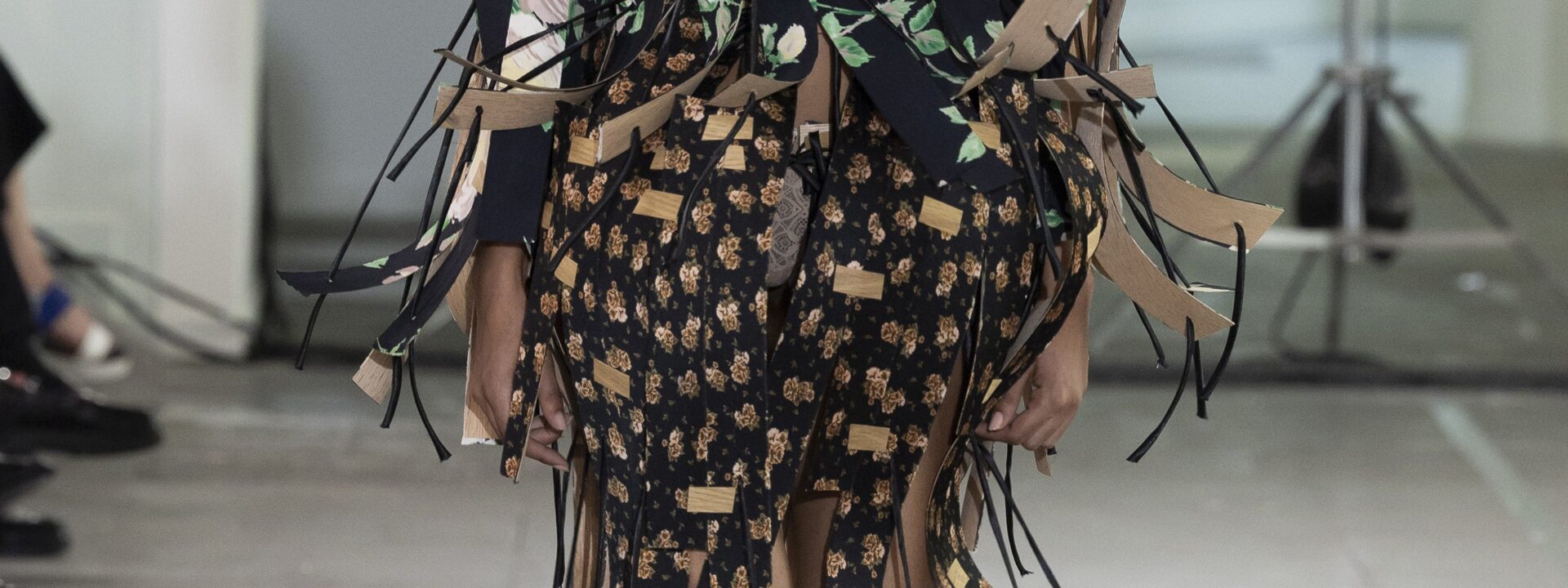La Cambre in Brussels is a dream come true for fashion students. Funded by the Belgian government, tuition is nearly free—even non-EU students pay just €4,174 per year (a figure that would make US and UK students wince). But what truly sets La Cambre’s fashion department apart isn’t just affordability—it’s the staggering list of alumni who’ve studied under Tony Delcampe in this 13th-century abbey. Names like Matthieu Blazy (Chanel), Anthony Vaccarello (Saint Laurent), Nicolas Di Felice (Courrèges), Julien Dossena (Rabanne), and Julian Klausner (Dries Van Noten), not to mention rising stars like Marine Serre, Ester Manas, Louis-Gabriel Nouchi, and Marie-Adam Leenaerdt.
The industry is fascinated by what magic happens here. This year, an international jury—including buyers, designers, headhunters, PRs, makeup artist Inge Grognard, and editors like myself—gathered to see the work of the 12 graduating students. The collections often share a common thread, and this year’s theme was experimentation with textures: latticed, caged silhouettes, bodies blending into furniture, carpets, or car upholstery. The human form merged with objects, with little focus on sensuality.
Yet, as always, the students’ ideas came alive in conversation. French designer Théodora Hadj Moussa Laube crafted a collection inspired by sailboats, weaving wood veneer with delicate florals. “Life is like being on a boat—it’s personal,” she said, drawing parallels between corsetry and a ship’s curves. Her work earned top marks.
Alexandre Piron explored trucker culture with molded Alcantara and seat upholstery, while Loïc Bernier translated construction-site materials into industrial padding. Lionel Gallez took inspiration from vintage menswear catalogs, creating a polished collection of cable knits and layered striped shirts—ready for retail.
Delcampe’s approach is fiercely technical. “Many schools tell students to ‘express themselves’ without focusing on garments,” he says. “Here, we push innovation in fabric, structure, and finishing.” Students get five years to develop their craft, plus four internships—preparing them for an industry just a train ride away in Paris.Since they speak French, language isn’t an issue. Meanwhile, students learn firsthand how Parisian fashion houses operate, gaining hands-on experience in different departments while studying supply chains and brand communication. This is how La Cambre shapes future creative directors.
“It’s part of the school’s culture,” said Delcampe. His graduates are slow burners—they work their way up, and five or ten years later, they emerge with major appointments at top houses. This happened all at once when Nicolas Di Felice, Julien Dossena, and Matthieu Blazy—all highly skilled professionals under 40—joined their peer Anthony Vaccarello in the spotlight. The @lacambremodes Instagram page shows just how many rising talents are following in their footsteps, with junior designers and studio managers now working at Celine, Alaïa, Balenciaga, Saint Laurent, Courrèges, Jacquemus, and beyond.
Matthieu Blazy once told me how crucial La Cambre’s multidisciplinary first-year program was in shaping his holistic vision of what a brand could be. The fashion department is part of an art and design school set on an idyllic campus. The curriculum includes “intense technical training alongside classes in history, philosophy, aesthetics, literature, and semiotics.” It also provides one of the most essential tools for entering the fashion industry: law classes.
Despite the free-spirited, liberal arts vibe, getting into La Cambre isn’t easy—another key to its success. The school maintains small class sizes and an extended study period, unlike many institutions that are cutting course lengths and raising fees while admitting more students. While other universities rely on digital portfolios and Zoom interviews, La Cambre requires applicants to take a rigorous four-day entrance exam in Brussels, testing creativity, visual skills, intellect—and even sewing.
The next round of hopefuls will face this challenge from August 25th to 29th. There’s one more hurdle: though La Cambre welcomes international applicants, classes are taught in French, so fluency is a must.
But nothing’s impossible. Before applying, brush up on French and sewing, and reflect deeply on why you want to pursue fashion. In today’s competitive landscape, a degree from La Cambre is one of the most valuable. Delcampe described the kind of driven, imaginative students they seek: “Our students must care about image, but also about sewing, making, and understanding the market they’ll enter. They have to bring ideas to life.”
La Cambre nurtures personal creativity while producing industry-ready professionals who contribute fresh perspectives. Another trait often noted in its alumni? A grounded, approachable demeanor—even at the peak of their careers. Fashion could use more of that.
“Well,” Delcampe said with a smile, “this isn’t a circus. It’s not about spectacle.”


